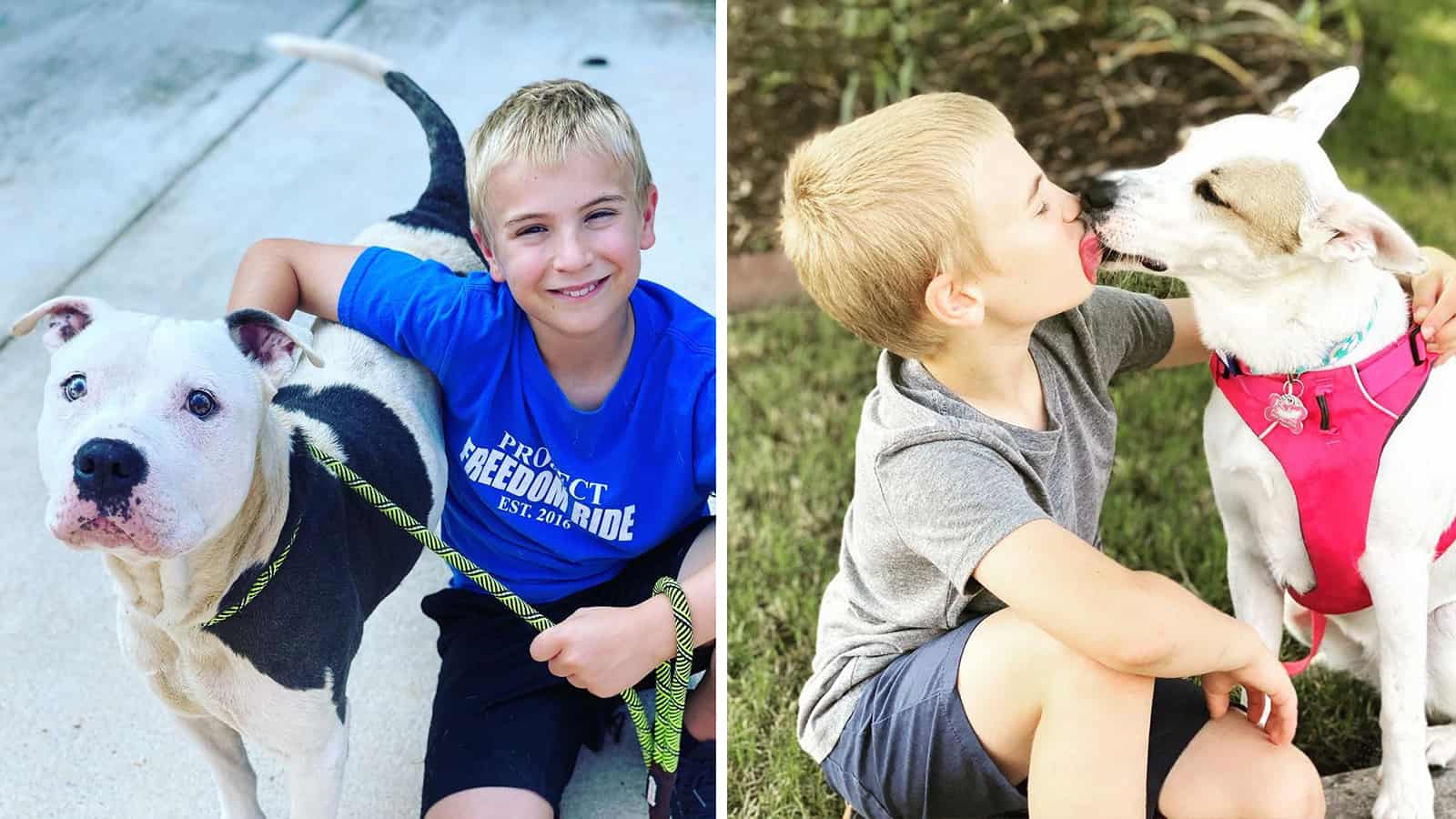If you look around your neighborhood or community, you’ll probably notice stray dogs roaming around. Unfortunately, there are about 70 million strays in the U.S. Only six to eight million cats, and dogs get put in shelters each year. In other words, there’s a massive stray dog problem in not only the U.S. but also in the world overall. In Holland, they’re taking this problem seriously and ensuring that all stray dogs stay off the streets.
How did Holland accomplish this? The government started implementing the PSVIR method (pick, sterilize, vaccinate, identify, and return). Because of this, it became the first country to have no stray dogs in 2016. Think of how wonderful it would be if every government could implement this strategy and save all beautiful animals from a life on the streets!
Here’s How Holland Became the First Country with No Stray Dogs
How the stray dog problem began
Since the 19th century, Holland’s dog population has grown tremendously. Virtually every family in Holland had a dog as a pet because they viewed it as a status symbol. However, rabies soon spread among the dogs since the population was so high, and it became one of the leading causes of death. This outbreak caused many pet owners to abandon their pets, which led to the stray dog problem.
Mandatory medical examinations
Holland wanted to reverse this problem somehow. They started setting days of compulsory sterilization and castration to take place. The government paid all expenses, so there was no excuse to avoid the responsibility. Because of this, they could sterilize 70% of female dogs. The services included medical examinations to see if the dogs needed any vaccines or other medical attention.
Making abandonment illegal
To ensure that the stray dog problem wouldn’t continue, the government made it illegal to abandon pets. The new laws protected pets from abuse and inadequate treatment from their owners. If owners broke the rules, they could be punished with up to three years in prison and a fine of $16,000 or more.
Increasing taxes on purebred dogs
Many people who want a dog choose to get one from a breeder because they’re considered better looking and healthier. Because of this, the Dutch government raised taxes on bred dogs in hopes that fewer people would buy them. It worked because people started going to shelters more often, which helped decrease the stray dog population.
Awareness campaigns
They also decided to raise awareness through campaigns to educate people about stray dogs. During the campaigns, people had the opportunity to give stray dogs a forever home. We’re happy to say that over a million stray dogs found homes during these campaigns, proving the beautiful things that can happen when people are made aware of a problem. 90% of the population ended up adopting a pet.
The end of stray dogs in Holland
The government decided to hand the job over to “Animal Cops” in 2011, a group of policemen who ensured that all dogs in Holland were safe and protected. Now, all dogs in the Netherlands have a safe home and are even allowed in most establishments.
How to Help Your Local Shelter Care for Stray Dogs and Cats
Shelters give stray dogs and cats a second chance by taking them off the streets and allowing people to adopt them. Caring for the animals takes monumental efforts from volunteers and staff, and they can’t always do it alone. If you’re an animal lover and want to help your local shelter, we have a few options for you below.
1. Walk the Shelter Dogs.
When stray dogs get taken to a shelter, they can no longer roam freely through the streets. Instead, they spend most of their time in a kennel and don’t get much opportunity to move around. The staff does walk the dogs each day, but as more stray dogs enter the shelter, it’s challenging to keep up with their needs.
Volunteers can help by walking the dogs around the shelter to get them used to humans and provide them with exercise. Plus, walking dogs benefit humans on a physical and emotional level.
2. Feed the Animals.
While the staff does take care of feeding the animals, they could always use a few extra hands. You can help shelters immensely by simply refilling water and food bowls for the stray dogs and cats. This gesture also gets the animals used to human interaction and will help them become more adoptable.
3. Bathe and Groom the Stray Dogs and Cats.
You can also help care for shelter animals by bathing, brushing, and grooming them. These kind actions help the animals look and feel their best, making them more desirable for potential adopters.
4. Clean the Kennels.
As you can imagine, kennels can get pretty messy after a while. Shelters need volunteers to clean the kennels so that the dogs and cats have a safe environment. To do this, you’ll want to remove the animal and other items from the kennel first. Then, clean any waste and debris from the kennel and spray it with hydrogen peroxide.
Next, use a long-handled brush to scrub the floor and let the disinfectant sit for 5-10 minutes. Finally, use a squeegee to push the water down the drain and allow the kennel to dry. This will give the animals a clean place to relax and reduce disease risk in the shelter.
5. Answer Phones at the Shelter.
Some people don’t enjoy the intensive hands-on duties required in animal shelters. Luckily, shelters also need help with administrative tasks such as answering phones or tending to guests. Jobs you could assist with at the front desk include filing paperwork, walking guests through the facility, and answering general questions.
6. Volunteer at Adoption Events.
Depending on the location, local pet stores usually hold adoption events weekly or monthly. They need help from volunteers to coordinate adoptions and answer questions that the public may have. Organizing these events can help the shelter find forever homes for deserving pets.
7. Use Your Natural Talents to Help.
You can help stray dogs and cats by using your innate talents to provide a service to shelters. These could include photography, website design, dog training, or simply cuddling with the animals! If you’re a veterinarian, you already help animals by spaying and neutering them and giving life-saving vaccines. Everyone has something they can contribute to help animals live a better life.
8. Donate Supplies.
Shelters welcome gently used or new supplies to keep their animals well-fed, happy, and healthy. Some items that shelters frequently ask the public for include:
- treats
- pet food
- cleaning supplies (paper towels, laundry detergent, hydrogen peroxide, etc.)
- pet beds
- collars
- toys
- blankets
- grooming supplies
- kitty litter
- puppy pads
- office supplies, such as printer paper, pens, markers, file folders, etc.
Check your local shelter’s website to see if they have a wish list or specific supply requests.
9. Neuter or Spay Your Animals.
Each time you spay or neuter a stray dog, you prevent another animal from possibly living on the streets. Plus, it keeps shelters from becoming overcrowded since most shelter animals were strays at one point. Also, you can help your local shelter by microchipping and vaccinating your pets and keeping them in a fenced area.
10. Adopt a Pet.
Of course, one of the best ways to help a stray dog or cat is to adopt them from a shelter. Shelters are better than a life on the streets, but no animal wants to stay in a shelter forever. Like humans, dogs and cats require love, companionship, and stability, so giving them a permanent home is an ultimate way to support them.
Plus, by adopting a pet, you allow the shelter to make room for more animals who need a loving home.
11. Post Adoption Information on Your Social Media.
One benefit of social media is its ability to relay information to a broad audience. You could help shelters increase their adoptions by posting information about animals on your social media pages. Simply sharing a cute animal photo is often enough to get someone’s attention nowadays.
12. Offer to Transport Shelter Animals.
Some people who adopt animals from a shelter live in different cities or states, making it difficult to pick up their furry friends. This is where volunteers come in, as they can help transport animals to their forever homes. Roman, a young boy from Texas, started his rescue program called Project Freedom Ride to connect people with unwanted, stray animals. The organization coordinates efforts to transport shelter animals from Texas and Georgia to other parts of the United States and Canada.
Even if you don’t want to start your transportation service, you can still check with your local shelter to see if they need help transporting animals.
Final Thoughts on Keeping Stray Dogs Off the Streets
Countries like Holland have succeeded in keeping stray dogs and cats off the streets by implementing strict policies. The government-mandated medical exams, made abandonment illegal, increased taxes on purebred dogs, and spread awareness about stray dogs. They also recruited a special police force to ensure all animals in Holland remained protected.
Hopefully, other countries around the world will follow suit. In the meantime, you can help keep animals in your community by adopting them from local shelters or volunteering at animal care facilities.
How do you help stray dogs in your community? Would you like to see your country implement these initiatives? Let us know in the comments!


















